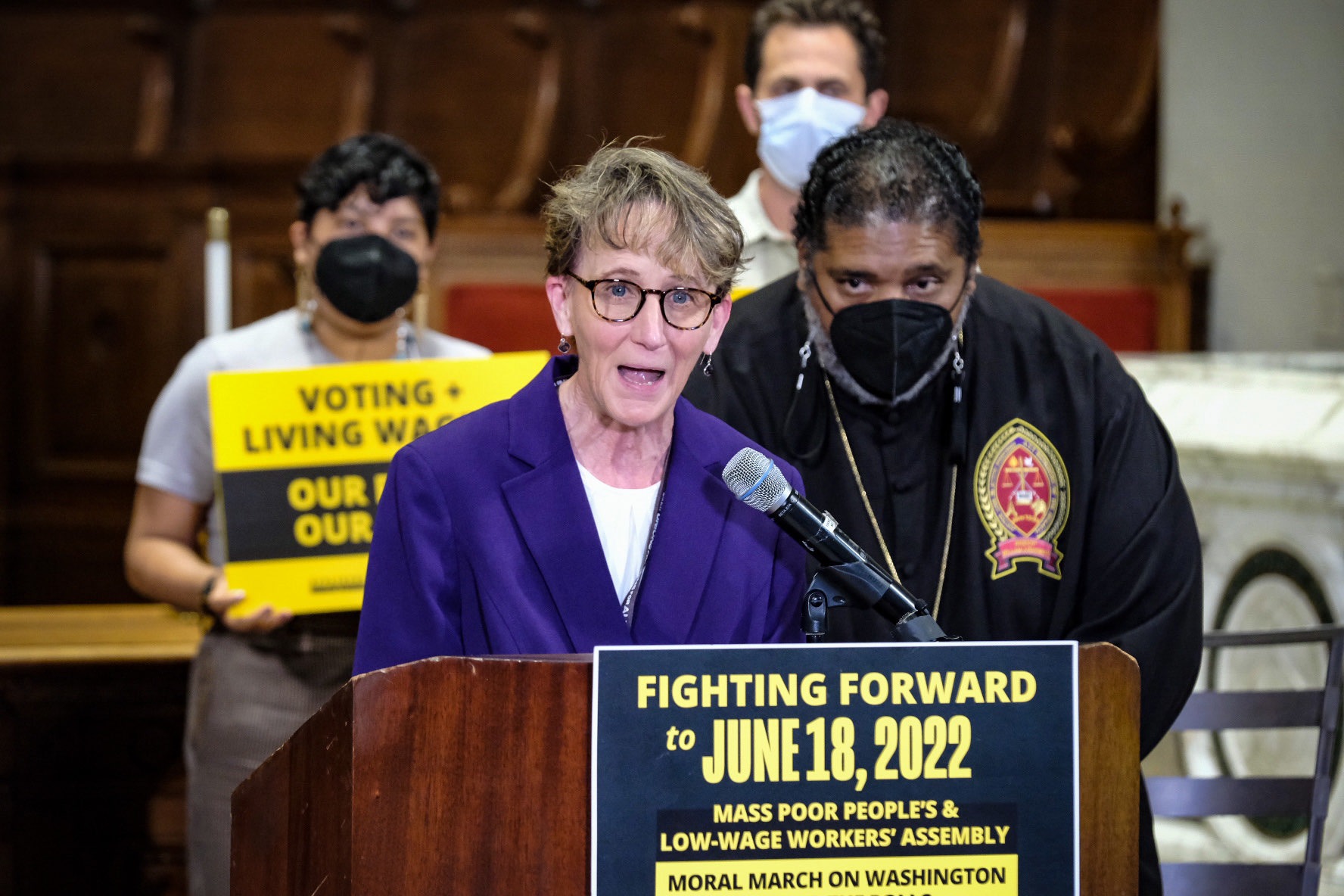New York, NY – A growing coalition of the nation’s labor unions are endorsing the June 18 Poor People’s and Low-Wage Workers’ March on Washington and calling on President Biden to meet with a delegation of its participants to raise the profile of the tens of millions who are working but still struggle to make ends meet.
“We are going to put in front of the American people the faces of people they do not think about,” Rev. Dr. William Barber, the co-chair of the march told reporters at a June 6, press conference. The march organizers estimate that nationally there are 140 million poor and low-wealth people, including close to half of all of the nation’s children.

The original Poor People’s Campaign rally was on June 19, 1968. It was the culmination of a national multi-racial organizing effort initiated by Rev. Dr. Martin Luther King Jr. who was assassinated in April of that same year after he came to Memphis, Tennessee on behalf of striking municipal garbage workers affiliated with AFSCME.
“On behalf of the two million members of SEIU, the millions more fighting for $15 and a union, and the millions fighting for every vote…. we are proud to call on President Biden to meet with the poor and low-wealth people,” SEIU President Mary Kay Henry said. “We no longer will accept a system built on workers’ backs while billionaires profit from the pandemic.”
“It’s about time that the country acknowledge the real persistent problem of wealth inequality and come together to support policies to address poverty and I think that’s what this march is about,” said Vincent Alvarez, president of the New Yew York City Central Labor Council AFL-CIO, which represents 300 unions and 1.3 million workers.
“Working people have had enough and they are saying that loudly with this action and their actions in the workplace throughout the country,” Alvarez said during a phone interview. “They see an economic system tilted toward the wealthiest in society. They see the CEO pay and the ratio with the worker pay growing and an uneven playing field which makes it hard for just everyday people to get ahead.”
Lee Saunders, president of AFSCME, who represents 1.4 million public sector workers, also enthusiastically embraced the June 18 march. Saunders emphasized the importance of President Biden’s meeting some of the participants who were part of the nation’s essential workforce that bore the brunt of the COVID pandemic.
“Working people are still getting a raw deal, poor people are still getting a raw deal,” Saunders said at the June 6 press conference. “They are overstretched and exploited and denigrated.”
Saunders put the June action in the context of what he said was an unprecedented uptick in grassroots union organizing initiated by workers themselves.
“Starbucks Coffee, the Amazon warehouses, libraries, museums, and hospitals and more — they are organizing unions to raise their voices on the job like never before,” Saunders told reporters. “But there is something else we must do. We must make our voices heard and we must organize and mobilize our communities block by block, borough by borough, city by city, state by state. In this movement for justice we have to make our voices heard in the election this fall.”
Keturah Johnson, an international vice-president with AFA-CWA, which represents 50,000 flight attendants, used some of her time at the podium to recount how her union persevered and prevailed after a multi-year battle with Piedmont Airline.
“For three years our employer refused to listen to us and wouldn’t negotiate a fair contract — they were just not responding to our urgent demands,” Johnson said. “While we kept the airline flying through the pandemic and we said enough is enough and in an historic 100 percent strike vote we all said ‘treat us fairly or we won’t keep your planes flying.’ We had a contract just a few months the later and it made a difference in our lives.”
Johnson continued, “We can’t be silent and we can’t be divided. They want us to believe that poor people and low-wage workers are powerless but we are not. We are stronger together — together we have the ability to create change.”
Just a few days after the press briefing, the Institute for Policy Studies released its annual analysis of CEO pay that this year zeroed in on the 300 U.S. corporations that had the lowest median pay in 2020. IPS concluded that two-thirds of them actually cut worker pay in 2021, opting to spend billions in stock buybacks resulting in the already massive CEO-worker pay gap to grow even wider.
The biggest buyback firm paying low wages was Lowe’s. “With the $13 billion the retailer spent on share repurchases the company could have given each of its 325,000 employees a $40,000 raise,” reported IPS. “Instead, median pay at the company fell 7.6 percent to $22,687.”
CEO pay at the 300 firms evaluated by the non-profit progressive think tank increased by $2.5 million “to an average of $10.5 million, while median worker pay increased by only $3,556 to an average of $23,968.”
James Parrott is an economist and the Director of Economic and Fiscal Policies at the Center for New York City Affairs at the New School.
“It is well timed,” Parrott said of the June 18 march. “Low wage workers In New York and the New York City Metro are really hurting because they are still struggling to recover the economic impact that COVID had which hit hardest at low-wage workers in leisure, hospitality, and retail. New York City is still 200,000 jobs short of where it was before the pandemic. Ninety-percent of that shortfall is in low-wage industries.”
Parrott observed that workers whose pay is pegged to the New York state’s $15 minimum wage, raised back in 2019, have lost considerable purchasing because it is not indexed to account for inflation which has been running at historic levels.



